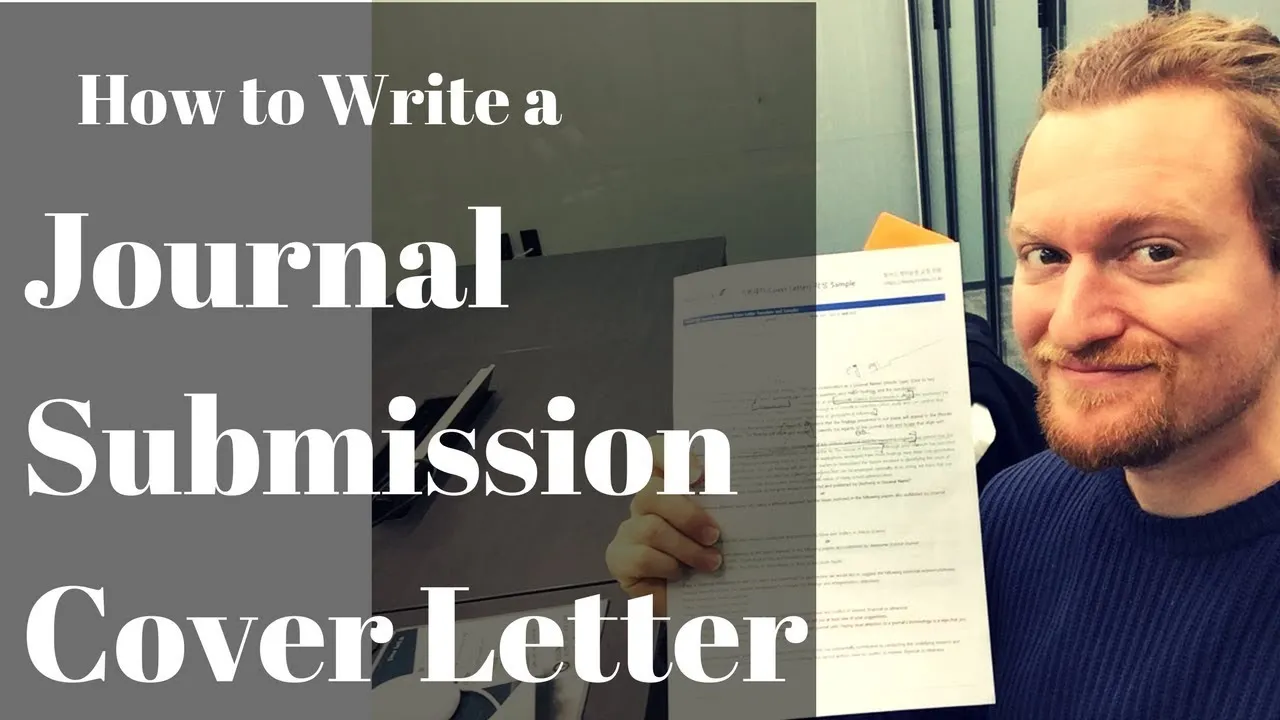Cover Letter Paper Submission Top 7 Tips
Submitting a research paper is a significant milestone, and a well-crafted cover letter is essential to accompany your manuscript. This crucial document introduces your work to the editor and reviewers, setting the stage for a positive evaluation. A compelling cover letter can significantly increase the chances of your paper’s acceptance. It serves as your first, and sometimes only, direct communication with the journal, offering an opportunity to explain the importance of your research. In this guide, we’ll cover the seven key tips to write an effective cover letter for paper submission, helping you navigate the academic publishing process with confidence and increase your chances of a successful submission.
Understand the Purpose of a Cover Letter
The primary purpose of a cover letter in paper submission is to persuade the editor that your work is a good fit for their journal or conference. It’s more than just a formality; it’s your opportunity to make a strong first impression. A well-written cover letter succinctly communicates the significance of your research, its novelty, and its relevance to the journal’s scope. It also allows you to address any specific requirements or guidelines set by the publication. A strong cover letter demonstrates professionalism, attention to detail, and respect for the publication’s process.
Why Cover Letters Matter
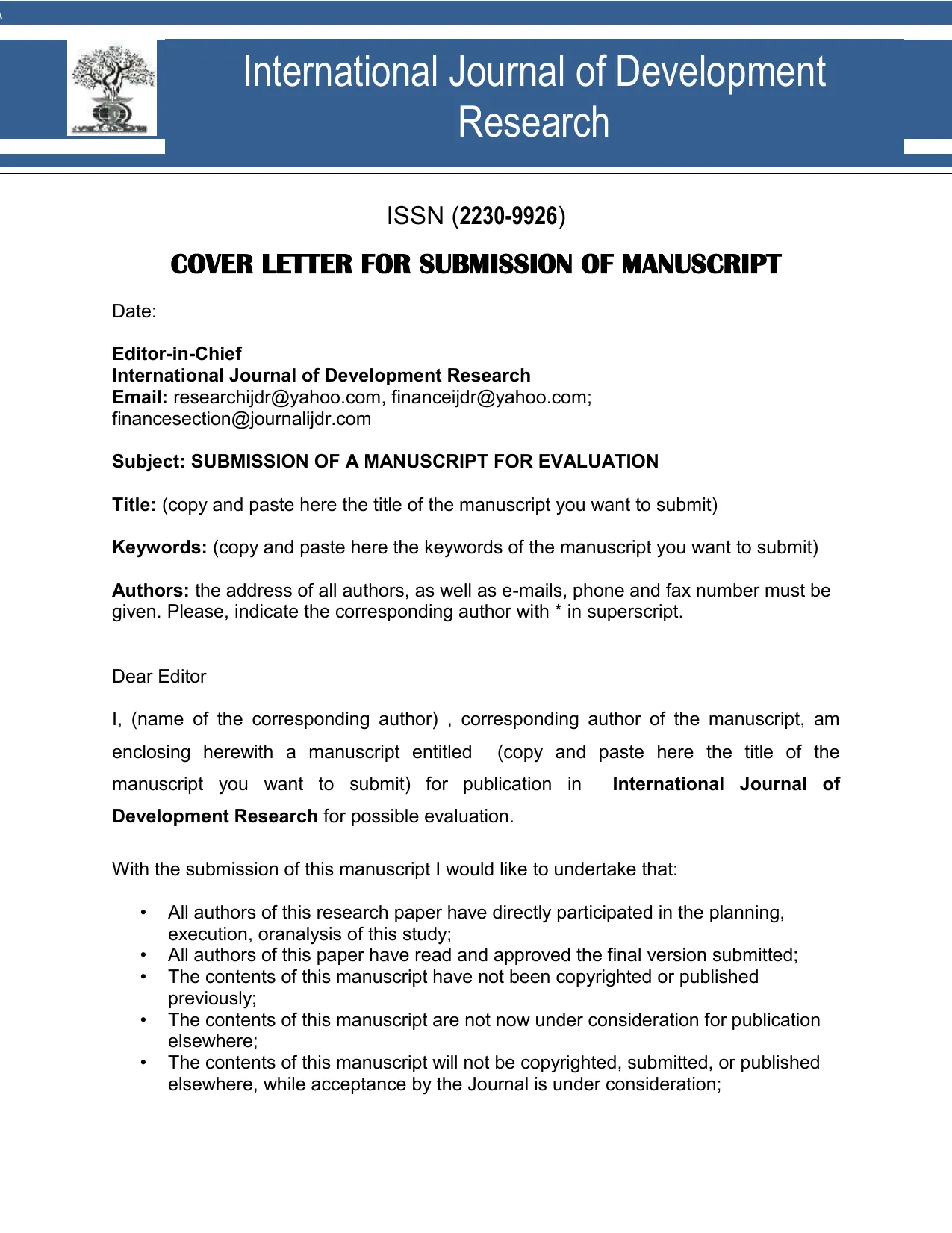
Cover letters offer a chance to provide context to the editor. Many times the research work is not fully clear on the paper, so a cover letter can do the job of making the research more understandable and accessible to the editor. This is the time to explain what the significance of the work is. When writing the cover letter, focus on what makes the study stand out and what is its contribution to the field. The editor will have an easy time if the cover letter is clear and concise. Many papers are rejected only because they lack a clear introduction that sells the work to the readers.
Cover Letter’s Role in Submission
The cover letter plays a vital role in the submission process. It provides context, offers clarity, and convinces the editor to consider your work for publication. Think of it as a sales pitch for your research paper. You should be able to show why the research is very significant, and why it deserves to be in the journal. The cover letter should adhere to the journal’s specific instructions for submission. A cover letter is not merely an introduction but a carefully crafted document that sets the tone for the review process, making it an indispensable part of the academic publishing process.
Tailor Your Cover Letter to the Paper
A generic cover letter will not impress the editor. You must customize it for each paper submission. This involves understanding the specific requirements and scope of the target journal or conference. Highlight the aspects of your research that align with their focus, and address any specific guidelines they provide. Demonstrate that you have carefully considered their publication, showing that your submission is not a mass mailing but a deliberate choice. This personalized approach shows that you understand the importance of the publication and are committed to its success.
Research the Target Journal or Conference
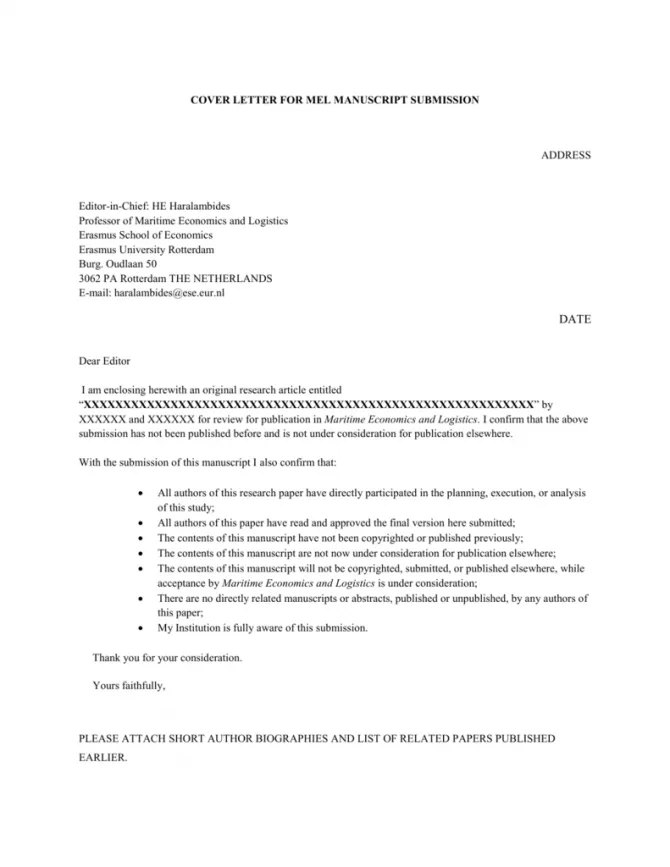
Before you begin writing, thoroughly research the journal or conference you are targeting. This includes understanding its scope, audience, and publication style. Review recent issues or conference proceedings to familiarize yourself with the types of articles they publish and the topics they prioritize. Understanding the publication’s preferences allows you to tailor your cover letter to highlight the aspects of your research that are most relevant. This will help you demonstrate your paper’s fit with the publication’s mission and increase the likelihood of a favorable review. Identify the journal’s or conference’s specific requirements for cover letters, such as word limits or requested information.
Highlight Relevant Research and Experience
In your cover letter, highlight the research and experience that make your work relevant and significant. Briefly summarize your key findings and emphasize their novelty and impact. If applicable, mention any previous publications or presentations related to your research, demonstrating your expertise and credibility in the field. Clearly articulate why your work is a valuable addition to the existing body of knowledge. Address how your work advances the field and contributes to its development. This focused approach enables the editor to quickly recognize the value of your paper and its relevance to their publication.
Structure and Formatting
A well-structured and formatted cover letter is crucial for making a positive impression. Organize your letter logically, with clear sections that convey key information efficiently. Use a professional tone and language, and pay attention to grammar, punctuation, and spelling. Proofread your letter carefully to ensure it is free of errors, showing attention to detail and respect for the editor’s time. Consistent formatting enhances readability and makes it easier for the editor to grasp the significance of your work. A well-structured and formatted cover letter can significantly influence the editor’s perception of your research.
Header and Contact Information
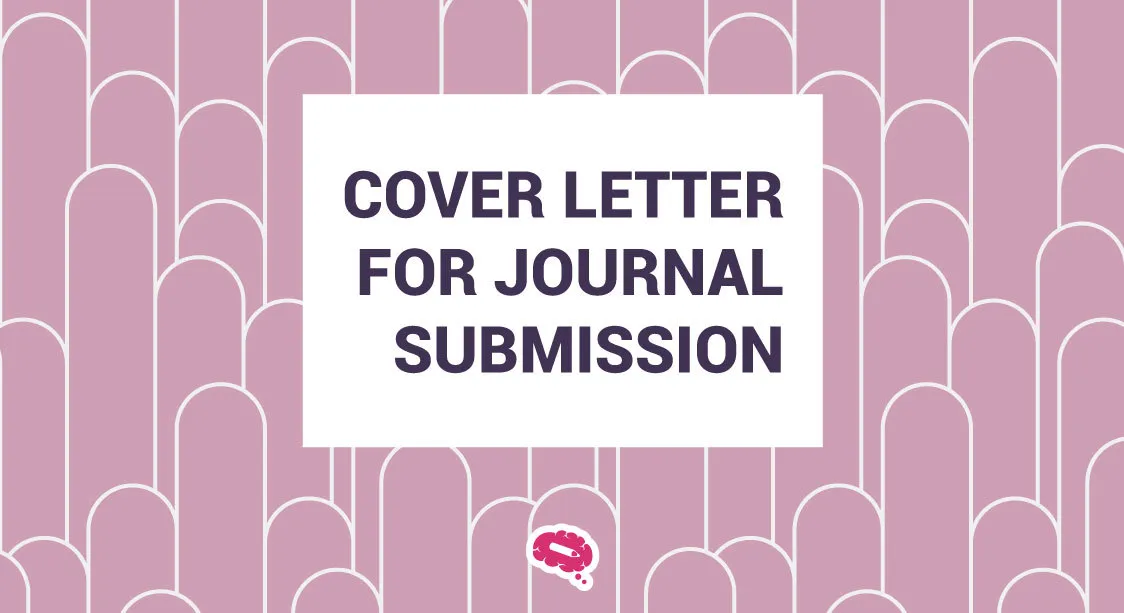
Start your cover letter with a professional header that includes your contact information, the date, and the editor’s or journal’s name and address. Make sure your contact details are current and accurate, so the editor can easily reach you. Use a formal salutation, addressing the editor or the journal editor by name, if possible. This is another element that shows you have taken the time to research the publication and are submitting a paper that fits it.
Salutation and Tone
Always use a professional and respectful tone. Address the editor by name if possible (e.g., Dear Dr. Smith). Avoid overly casual language or jargon that the editor might not understand. Express enthusiasm for your research and its potential impact. Be clear, concise, and courteous throughout the letter. Your tone sets the stage for the editor’s perception of your work and professionalism.
Body Paragraphs Crafting
The body paragraphs are the heart of your cover letter. They should clearly and concisely explain the purpose of your research and its significance. Start with an engaging opening statement that captures the editor’s attention. Summarize your key findings and contributions, emphasizing their novelty and impact. Clearly state why your work is suitable for the specific journal or conference. Provide sufficient detail to give the editor a clear understanding of your work, but avoid excessive technical jargon or overwhelming the reader with information. The body paragraphs are essential for highlighting the value of your research and persuading the editor to consider your submission.
Opening Statement & Hook
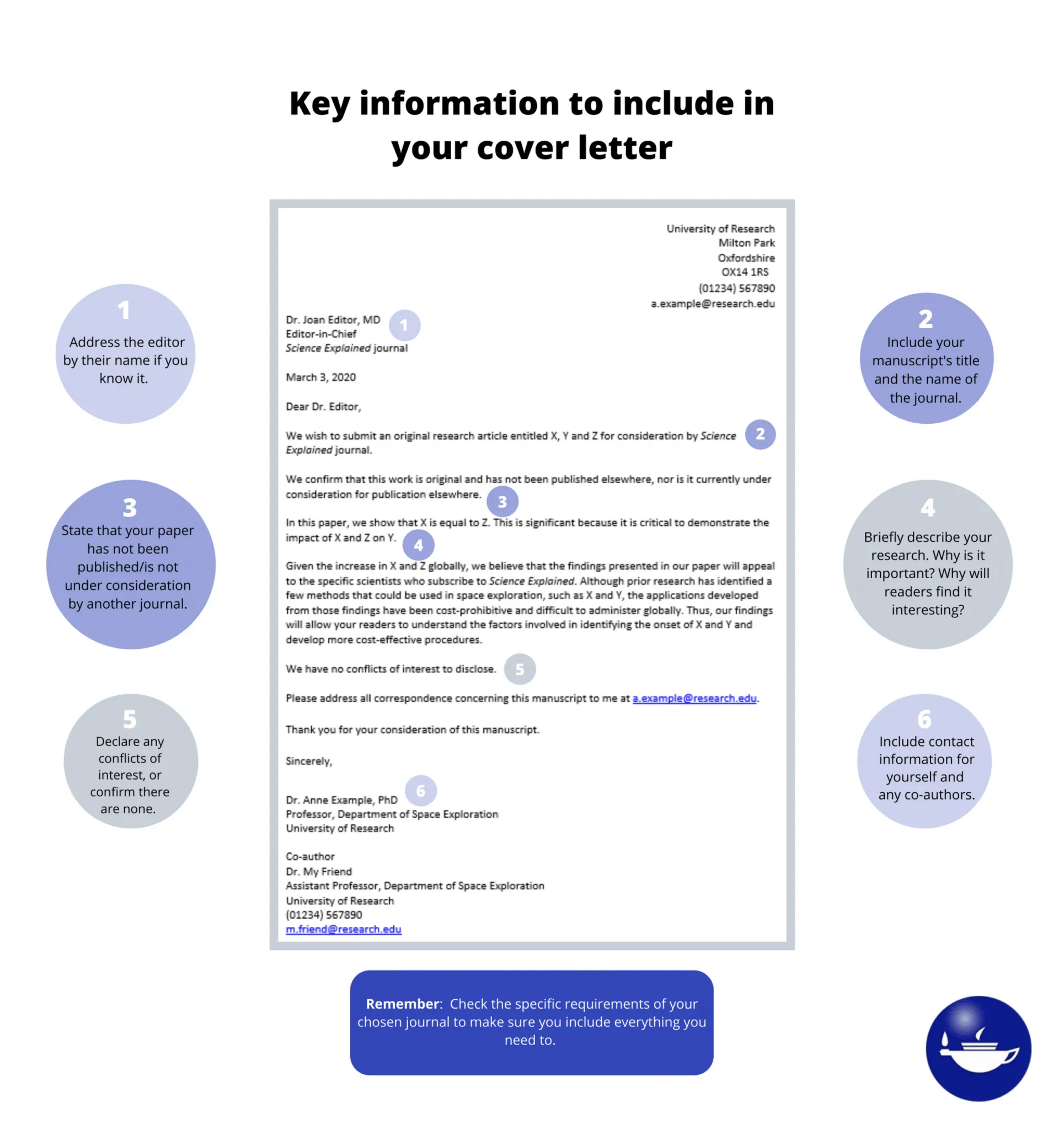
Begin your cover letter with a compelling opening statement. This could be a brief summary of your research question, its importance, or your key findings. Aim to capture the editor’s interest from the start, setting the tone for the rest of the letter. If possible, include a hook that relates to the journal’s scope or mission. Clearly and concisely state the purpose of the submission and its alignment with the publication. Ensure that the opening is engaging and sets the context for the rest of your letter.
Summarize Key Findings and Contributions
In the body of your letter, provide a concise summary of your key findings and their significance. Highlight what makes your research novel or unique and its potential impact on the field. Emphasize the contributions of your work and how it advances existing knowledge. Briefly describe the main methods you employed, allowing the editor to quickly grasp the scope and nature of your research. Keep your summary brief and focused, but ensure it conveys the most essential information about your findings.
Closing Paragraph & Call to Action
Conclude your cover letter with a strong closing paragraph that summarizes the key benefits of your submission. Reiterate your enthusiasm for your research and its relevance to the journal or conference. Include a call to action, such as requesting consideration for publication. Express gratitude for the editor’s time and consideration. Offer to provide any additional information needed. A well-crafted closing reinforces your key arguments and leaves a positive final impression, increasing your chances of a favorable decision.
Proofreading and Editing
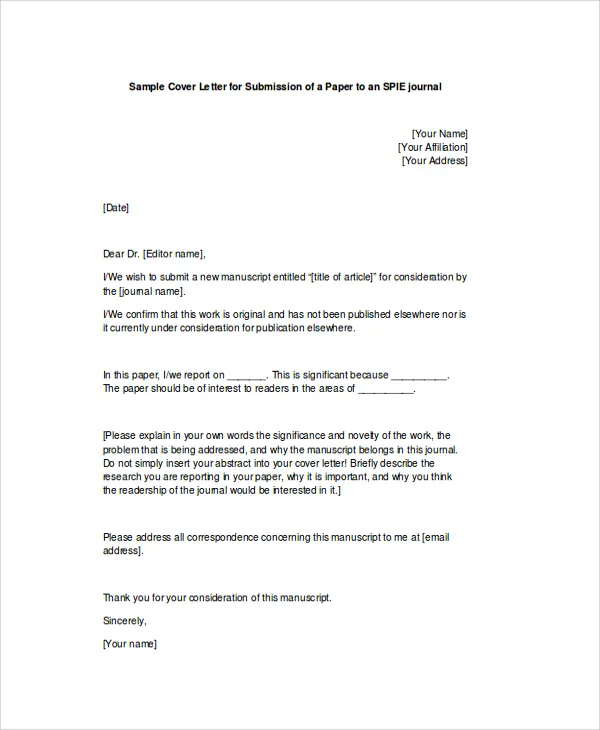
Before submitting your cover letter, thoroughly proofread and edit it. Check for grammar, punctuation, spelling, and formatting errors. Ensure that the language is clear, concise, and professional. Avoid any jargon or technical terms that the editor might not understand. Read your letter aloud to check for flow and clarity. Ask a colleague or mentor to review your letter for feedback. Proofreading and editing are vital steps in ensuring that your cover letter presents your research and yourself in the best possible light. This shows the editor that you are detail-oriented and committed to producing high-quality work.
Common Mistakes to Avoid
Avoid generic cover letters; tailor each to the specific journal or conference. Do not include overly technical jargon. Refrain from being too informal or casual in your tone. Avoid making unsubstantiated claims or exaggerations. Always ensure the letter is free of errors. Remember to follow the submission guidelines, including word limits and required information. Be mindful of formatting to maintain a professional appearance. By avoiding these common mistakes, you demonstrate professionalism and increase the likelihood of your paper’s acceptance.
Ensure Clarity and Professionalism
Maintain clarity and professionalism throughout your cover letter. Write concisely and use language that is easy to understand. Use a professional tone and address the editor or conference organizers appropriately. Ensure your letter is well-organized and easy to follow, with clear sections. Avoid slang, jargon, or overly complex sentences. Show respect for the publication and its processes. Clarity and professionalism are paramount in creating a positive impression and helping your research shine.
Submission Process
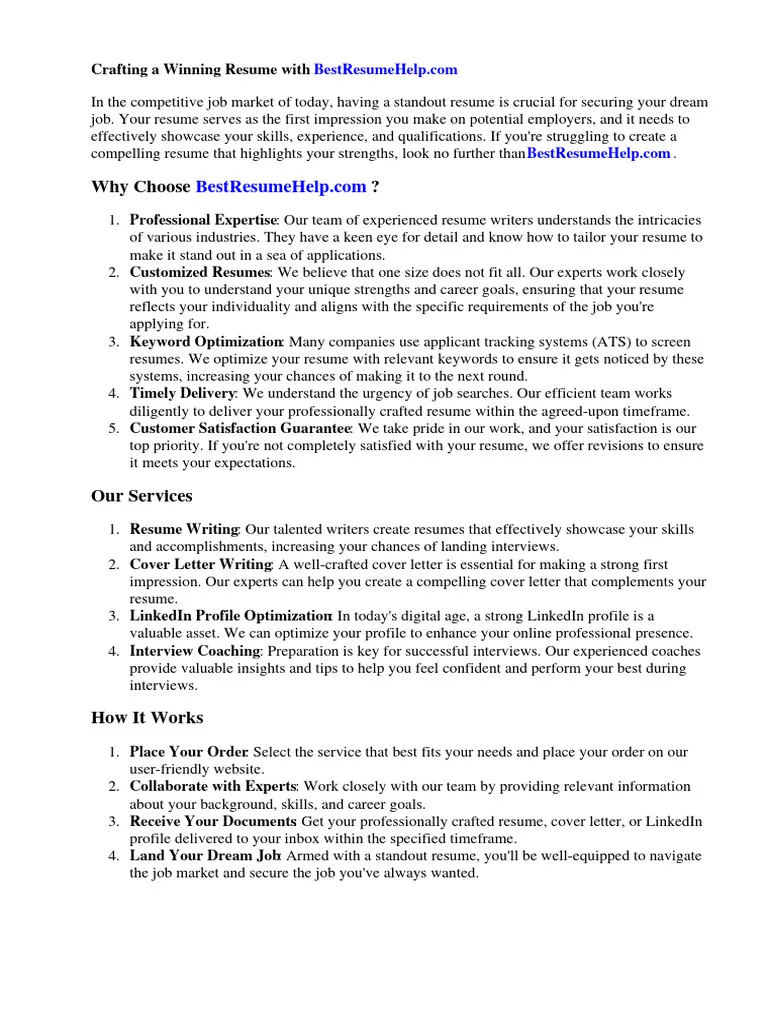
Follow the submission guidelines carefully. Ensure you meet all requirements, including formatting, word limits, and required information. Pay close attention to the journal or conference’s online submission portal or email instructions. Attach your cover letter and manuscript in the formats specified by the publication. Keep a copy of your submission for your records. The submission process is a crucial step, so adhere to the specific instructions to ensure your work is properly considered.
Follow Submission Guidelines
Always adhere to the submission guidelines provided by the journal or conference. These guidelines typically specify the required formatting, word limits, and any specific information to include in your cover letter. Failure to follow these instructions can lead to your submission being rejected without review. Read the guidelines carefully and make sure your cover letter and manuscript meet all the requirements. Attention to detail at this stage demonstrates professionalism and respect for the publication process. Ensure you understand and follow all instructions regarding the cover letter’s content, format, and submission method.
Review Checklist Before Submitting
Before submitting your cover letter, create a review checklist to ensure that all the necessary elements are included and that your letter meets the publication’s requirements. Review your contact information, the date, and the addressee’s details. Confirm that you have tailored the letter to the specific journal or conference. Check for clarity and conciseness, and proofread for any errors. Ensure you’ve included a strong opening, a summary of your key findings, and a clear call to action. Confirm you have attached the manuscript in the correct format. Use this checklist to avoid common mistakes and ensure that your cover letter presents your research effectively.
